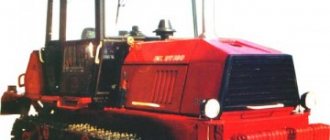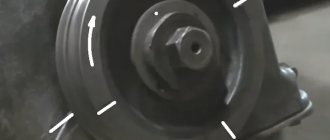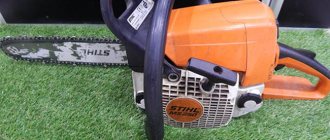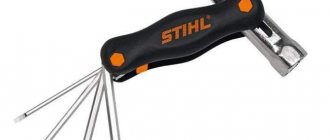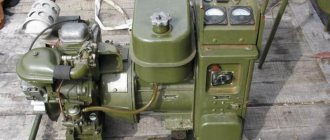We have written before about generators for trucks. However, today we want to look at the device connection diagram and give some operating tips.
So, the generator 4242 03.3771 has a rectifier in the voltage regulator.
Before assembly, the functionality of the installation rectifier must be checked on a bench.
Since the block consists of three elements, we advise you to inspect all the transitions.
Repair and connection of the generator on MAZ trucks
The MAZ generator is a source of electricity for the vehicle's on-board network when the engine is running. The consumers are powered in parallel with the battery. The network is designed in such a way that when the generator voltage is more than 24 V, the batteries begin to charge, and less - vice versa. MAZ vehicles are equipped with units of various types, differing in power and connection method. However, their design and operating principle are the same.
Catalog of spare parts for MAZ-551605 (551605):
Our catalog contains all the spare parts used in the MAZ-551605.
Select the node you need. To make it easier to find spare parts for the MAZ-551605, you can use the quick filter. Quick Filter by nodes:
- Body
CabinInstallation of a small cabin
- Support beam 5551-5001660
- Cabin installation
- Fastening the cab to the frame 551605-5000004
- Support beam 551605-5001660
- Installation of a large suspended cab
- Front suspension of large cab 64226-5001700
- Large cab rear suspension 64221-5001800
- Installation of washer 64221-5200008-01
- Dashboard
- Installation of ventilation hatch 64221-5700010
- Installation of door limiter and hinges 64221-6100006-10
- Installing an exterior door handle and lock
- Installing the window lifter and window lifter handle
- Installation of glass and mirrors on a large cabin
- Installation of glass and mirrors on a small cabin
- Installation and pneumatic supply of seats 64221-6800006-10
- Installation of the platform viewing mirror 5516-8200004-01
- Installation of cladding and side panels
- Installation of the box 551605-8400031
- Engine
Engine
Engine mount
- Installation of filling system and oil level control 630300-1018002
- Heater installation
- Installation of heater fuel lines
- Mounting pre-heater 642290-1015001
- Heater 6422-1015006
- Installation of soundproofing screens 555102-1061003-040 (551605-1061002-040)
- Installation of soundproofing screens 642208-1061003-050 (551605-1061002-050)
- Installation of soundproofing screens 551605-1061004-040
- Fuel supply lines for heater 6422-1015004
- Installation of exhaust gas system 551605-1200001-004 with body heating (for gearbox 238M, 239)
- Cooling System Installation
- Clutch
Clutch control mechanism
- Installation of gearbox control drive 642205-1700002, 642208-1700002
- Installation of cardan shafts
- Rear axle
- Bridge average
- Frame, bumpers and engine mudguards
Frames 551605-2800010-024, 551605-2800010-017
- Front suspension 551605-2900001-010
- Front axle
- Installation of spare wheel 551605-3100001(-700)
- Steering
Installation of the steering column and steering mechanism 630300-3400001-010(-710), 551603-3400001-010 (-710)
- Front wheel brake
- Electrical equipment
Installation of road train lights 64221-3700099-10
- Accessories
Installing Accessories 5516-3900011
- Power supply to power take-off 551605-4200007-032
- Hydraulic cylinder 55165-8603510
Spare parts diagrams and components are presented on the website for reference purposes! We do not sell all spare parts for MAZ-551605 presented in this list, but many of them.
Device
The generating set (GS) is a three-phase synchronous machine with excitation from an external power source and a rectifier unit. To control the output voltage and maintain it within specified limits, an integrated voltage regulator is installed.
The operating principle of the generator is based on the phenomenon of electromagnetic induction. The rotating magnetic field of the rotor, crossing the stator windings, induces an EMF in them, which is connected to the load through the rectifier unit. The main elements of the generator are:
- rotor;
- stator;
- front and back covers with built-in rectifier;
- brush holders with integral voltage regulator;
- fan pulley and impeller.
The generator rotor is a shaft made of electrical steel, on which an excitation winding (inductor) is wound. Power is supplied to it through 2 contact rings installed on the side of the back cover. 12 beak-shaped magnets are pressed onto the shaft. Ball bearings are installed at both ends of the rotor.
The stator winding is three-phase and consists of 36 coils. Each phase has 12 series-connected windings located in the stator slots and offset from one another by 120°. The electrical connection of the poles is made according to the “star” principle. The phase output terminals are connected to the rectifier unit.
A rectifier unit, voltage regulator and brush holders are installed on the back cover of the generator. The body elements are cast from aluminum alloy. In the center of each cover there is a place for installing a bearing. The fan impeller is installed on the rear end of the shaft, held from turning by a key and secured with a nut. In a similar way, a double-groove pulley is attached to the armature shaft in the front part of the GU. The design of generators of different models of MAZ cars is the same and differs only in the way they are connected to the network.
How to connect a MAZ generator
The proper operation of on-board network devices largely depends on the correct connection of the control unit. If MAZs of the famous 500th series could operate using only one battery, then this is impossible on modern cars. The presence of a large number of electronic devices and gadgets has increased the power consumption of the network and requires an additional power source.
The connection diagram for the MAZ generator depends on its type. However, in all cases, the inductor must be powered and the load must be connected, which is the on-board network and battery. The connection terminals are located on the back cover and are designated by the letters “W” and “+D” for the field winding and “+” for the load (ignition switch).
The output of one of the phases of the PG is connected to the tachometer. Terminal “B” is connected to the generator blocking relay and the battery charge indicator lamp. The connection circuit is simple, but requires attention when performing work.
Technical component
Technical characteristics of MAZ-551605-280:
| Average fuel consumption | |
| Wheel formula | 6*4 |
| Maximum engine power | 243 l. s.s. |
| Pressure exerted on the front axle | 7,000 kg |
| Rear Cart Load | 26,000 kg |
| Curb weight | 13,000 kg |
| Maximum weight of transported cargo | 20,000 kg |
| Loading platform volume | 15.4 m³ |
| Power unit model | YaMZ-238DE2 |
| International environmental standard | Euro 2 |
| Number of gears | 8 |
| Drive wheel ratio | 6,59 |
| Wheel size | 12.00R20 |
| Fuel tank volume | 350 l |
| Gross vehicle weight, kg | 33 000 |
| Wheelbase | 3.9+1.4 m |
| dimensions | 8.13*2.5*3.14 m |
Parameters and indicators of MAZ-551605-271:
| Total number of wheels | 6 |
| Number of driving wheel mechanisms | 4 |
| Front axle pressure | 7,000 kg |
| Load on the rear bogie | 26,000 kg |
| Curb weight | 13,000 kg |
| Motor model | YaMZ-238DE2 |
| Environmental standard | Euro 2 |
| Type of fuel used | Diesel |
| Gearbox model | YaMZ-238M |
| Gearbox type | Mechanical |
| Number of gears | 8 |
| Gear ratio | 6,59 |
| Tire size | 12.00R20 |
| Fuel container | 350 l |
| Maximum driving speed | 92 km/h |
| Load capacity | 20,000 kg |
| Weight | 33,000 kg |
Malfunctions
GU breakdowns can occur in both electrical and mechanical parts. Signs of defects are the absence of charging current when the car engine is running or a voltage drop when a large load is turned on. In the first case, the malfunction is most often associated with a lack of excitation current or failure of the voltage regulator, and in the second, with slipping of the drive belt.
All defects can be eliminated, except those associated with damage to the stator and rotor windings. In this case, a unit replacement of the mechanism is necessary.
Repair
To eliminate malfunctions, the power unit must be dismantled from its original location. The fault can only be identified by disassembling the device. The result should be 2 halves: the first, consisting of the front cover with a pulley and armature, the second - from the rear cover and stator. To carry out checks and measurements, the stator winding is disconnected from the rectifier unit. The coils are checked for integrity and breakdown to the housing.
To measure the resistance of the windings, a tester is used, and a 100 V megohmmeter is used to measure short circuits to the housing.
The use of 220 V indicator lamps is prohibited due to safety requirements. The field winding is checked in the same way. Damaged elements must be replaced.



